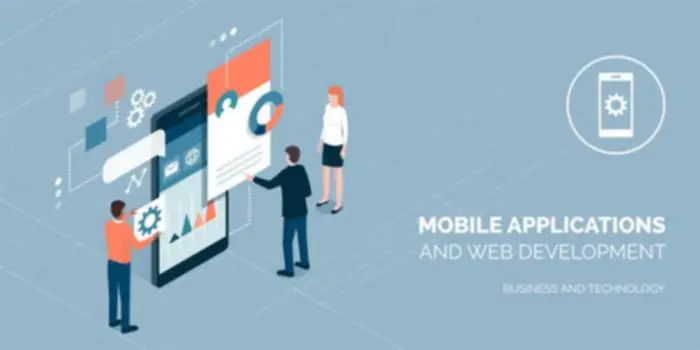The prioritization course of entails often revising and realigning goals to adapt to a dynamic enterprise surroundings. If a staff begins utilizing an digital software before they have settled on their approach to product backlog management, the device can drive a team’s method to product backlog management. The group may get hung up on how to use the software quite than deciding on the process that works best for them.

That means a staff doesn’t need to have an thought fully fleshed out earlier than adding it to the product backlog. When a product backlog item is initially added to a product backlog it solely needs to have enough information to remind the group what the choice was. A product backlog merchandise solely needs to be absolutely described when a team is about to start work on it. The backlog plays a pivotal role in task monitoring by providing a centralized platform where group members can evaluate and oversee the progress of each merchandise. It aids in prioritization by enabling project managers to allocate importance ranges to tasks based mostly on their impact on project objectives.
It has a number of features that make it easy to keep tabs on your activities and accomplishments. The present tendencies in backlog management tools emphasize efficiency, person alignment, and data-driven decision-making, with tools increasingly performing as “co-pilots” for Agile teams. Consequently, there’s a decline in manual processes and lowered reliance on e mail due to in-app notifications and integrations. When faced with large and sophisticated objects (epics) within the backlog, break them into smaller, more manageable tasks or consumer stories. This strategy facilitates better estimation, planning, and execution, permitting the staff to sort out one piece at a time and ensuring a more agile and responsive growth process.
Trello Scores And Reviews
These choices are often based mostly on quite so much of factors, including market developments, buyer suggestions, aggressive analysis, and business objectives. By capturing these selections, a backlog serves as a strategic guide that aligns the product development efforts with the overall business goals. In the realm of product management, significantly within Large Language Model early-stage SaaS startups, the time period ‘backlog’ carries significant weight. It is a term that encapsulates a myriad of ideas, methods, and practices which are essential to the successful growth and management of a product.

This coverage was launched by the Coalition government in 2014, with the purpose of dashing up processing and decreasing the backlog of asylum purposes. When looking at bugs or needed UI-improvements, product managers should be weighing how many customers are experiencing the difficulty against how severe the difficulty is. Good judgment must be used when determining whether or not a minor issue that has effects on deep product backlog all users must be addressed earlier than or after a significant concern that affects a few users. Track, filter, and troubleshoot your utility logs throughout environments—without the complexity. Ever tried to read raw logs full of cryptic strings and half-broken lines?
Including And Updating Duties
Real-world examples underscore the extensive range of backlog utilization. If the backlog grows too massive or lacks any constant, coherent organization, it could possibly shortly shift from a valuable useful resource to an unsalvageable mess. Nice concepts, key buyer requests, and crucial technical debt points carry equal weight. With random gadgets, no one will ever actually prioritize growth and fragmented thoughts so inarticulate the group can’t even keep in mind why they’re in there. The excellent repository turns into a large junk drawer nobody could make sense of or has the time and motivation for both.
The most important objects are shown at the prime of the product backlog so the group is aware of what to deliver first. The development staff doesn’t work by way of the backlog on the product proprietor’s tempo and the product owner is not pushing work to the event team. Instead, the event team pulls work from the product backlog as there may be capability for it, both frequently (kanban) or by iteration (scrum). Teams can use the product backlog to keep away from losing time debating whether or not an option is valuable or not primarily based on limited info. When a brand new idea presents itself, the staff can add a product backlog item as a reminder to research the concept additional.
That’s why structured formats such as JSON or key-value pairs are the safer selection. Log administration isn’t really about gathering data—it’s about making knowledge useful. Whether Or Not debugging a reside problem or looking for performance bottlenecks, adhering to a few main practices can dramatically enhance how effective and safe your logging infrastructure is. Most teams proceed to make use of batch log evaluation, the place insights are minutes or hours after the events have occurred.
Moreover, the backlog can help to keep stakeholders informed concerning the project’s status and what nonetheless must be carried out. Built on monday.com WorkOS, monday dev permits you to create workflows that fit your team’s wants. Whether you’re utilizing Agile, Scrum, or one thing customized, you have the flexibility to design your own processes and track your product backlog. Focus on high-value objects utilizing prioritization frameworks like MoSCoW (Must-have, Should-have, Could-have, Won’t-have) or weighted scoring.
- A dash backlog is a list of duties that should be completed during the next sprint.
- Vabro simplifies backlog administration by integrating project administration capabilities.
- The product backlog incorporates each potential merchandise into consideration for a product.
- The selection of technique is dependent upon the team’s preferences and the particular context of the product.
- This helps set expectations with stakeholders and different groups, particularly after they deliver extra work to you, and makes engineering time a fixed asset.
- New ideas get added as suggestions from the market, and clients continually roll in via various channels.
Alongside with the review, re-prioritization of work occurs which have an effect on the estimates and should come up new necessities for the project. It’s attainable for a product backlog to get too giant to be effectively managed. This happens if a staff provides each concept that gets suggested for addressing the result but by no means explores the ideas or removes the gadgets that won’t be delivered. Product backlogs also can grow to an unmanageable size if all giant product backlog objects are split into smaller product backlog gadgets too far prematurely of when the group will work on them.
The dynamic nature of a product backlog supplies groups with a approach to handle their studying in regards to the desired outcome and potential ways to deliver that consequence. The product backlog does not must be complete when a group begins work, so the team can start with an preliminary thought and add new product backlog items as they be taught more. Concrete situations of backlogs in motion illustrate how development teams estimate, prioritize, and fulfill backlog gadgets so as to efficiently reach project milestones. These cases serve as sensible demonstrations of the implementation of backlog management across numerous industries. Backlogs facilitate efficient workflow administration by ensuring that the team concentrates on delivering high-priority items first, finally leading to successful project outcomes. In Agile methodology, particularly within Scrum, sustaining a well-structured backlog is crucial for efficient dash planning and guaranteeing that the staff focuses on the most valuable duties.
Backlog administration is the method of prioritizing, organizing, and executing duties, tasks, or requests that accumulate over time and remain incomplete or unresolved. In a enterprise context, backlog management includes systematically addressing pending work items to ensure effectivity, productiveness, and well timed delivery of services or products. Total, a well-managed product backlog is essential for agile product improvement. It ensures that groups are engaged on essentially the most useful tasks and that everyone is aligned and working towards the same goals.
In Agile, the tasks within the dash backlog are prioritized primarily by their business worth and risk. High-priority actions have a larger potential to affect the product’s success. It permits the team to track their progress and choose which duties should be https://www.globalcloudteam.com/ tackled next.
In addition to the outline, tasks may also include different details corresponding to acceptance standards, design mockups, or person stories. Moreover, a backlog helps ensure that the product strategy stays versatile and adaptable. Given the dynamic nature of the market and customer wants, it’s essential for a product strategy to find a way to pivot and modify as needed. A backlog facilitates this by permitting for continuous reassessment and reprioritization of duties based mostly on changing circumstances. It provides a platform for stakeholders to discuss, debate, and reach consensus on the product’s path.
In the Scrum framework, the Scrum product backlog is a structured and thoroughly maintained list utilized by the Scrum product proprietor to information the development team’s tasks. A product backlog can be an efficient method for a team to communicate what they are engaged on and what they plan to work on next. Story Maps and info radiators can provide a transparent image of your backlog for the group and stakeholders. A product backlog is a list of the new options, changes to present options, bug fixes, infrastructure modifications, or other actions that a team may deliver in order to achieve a particular end result. Individuals can leverage backlogs to streamline every day duties, set targets, and monitor progress towards achieving desired outcomes in private life.













